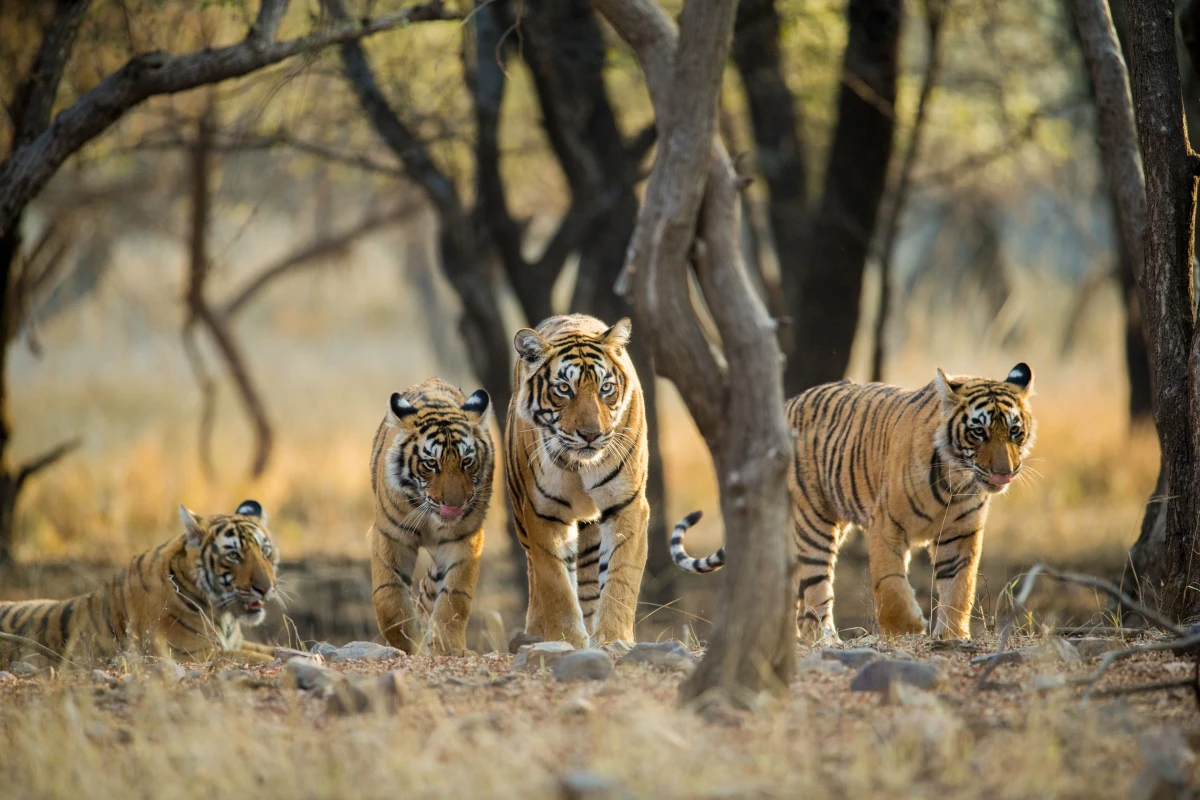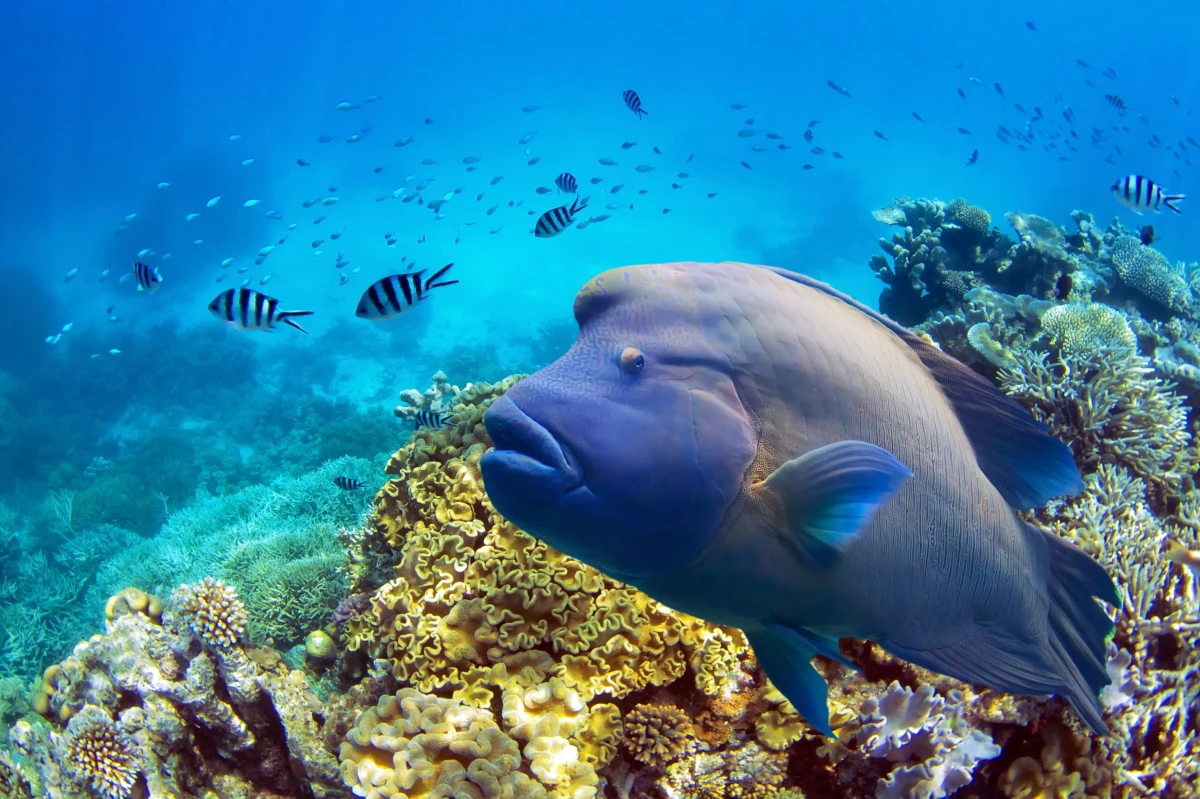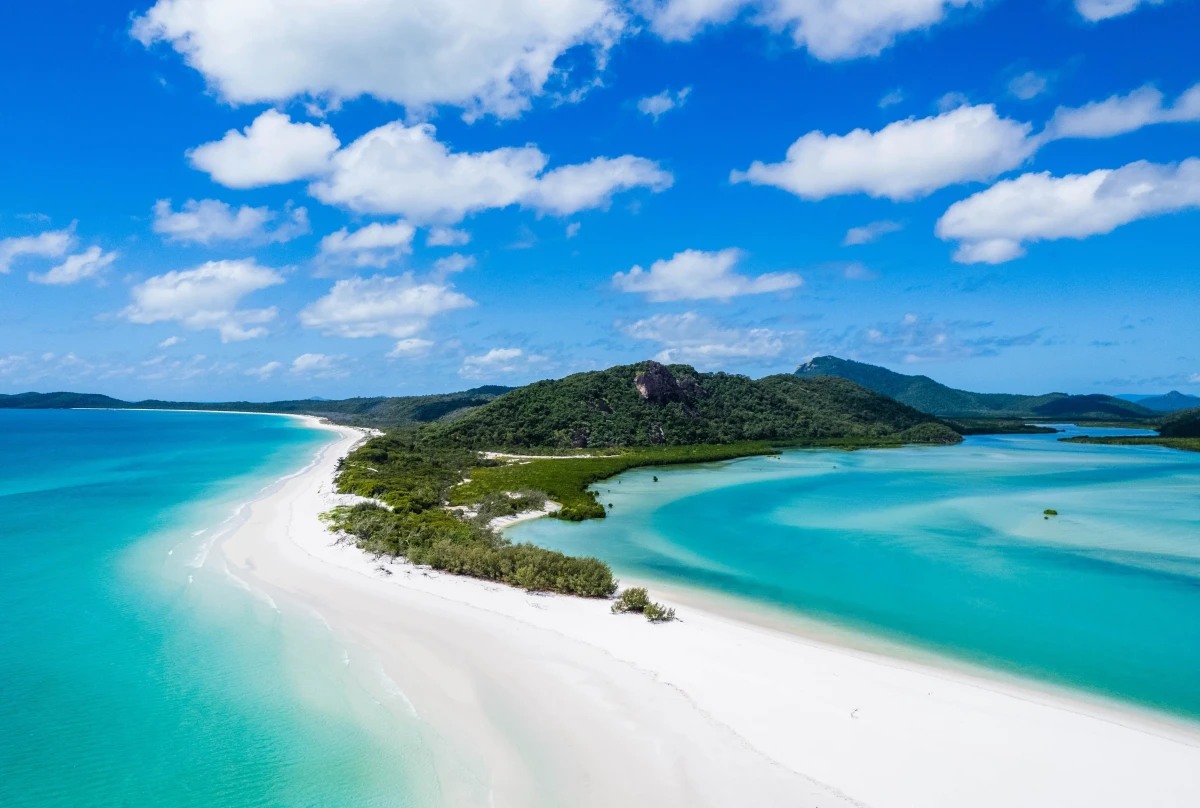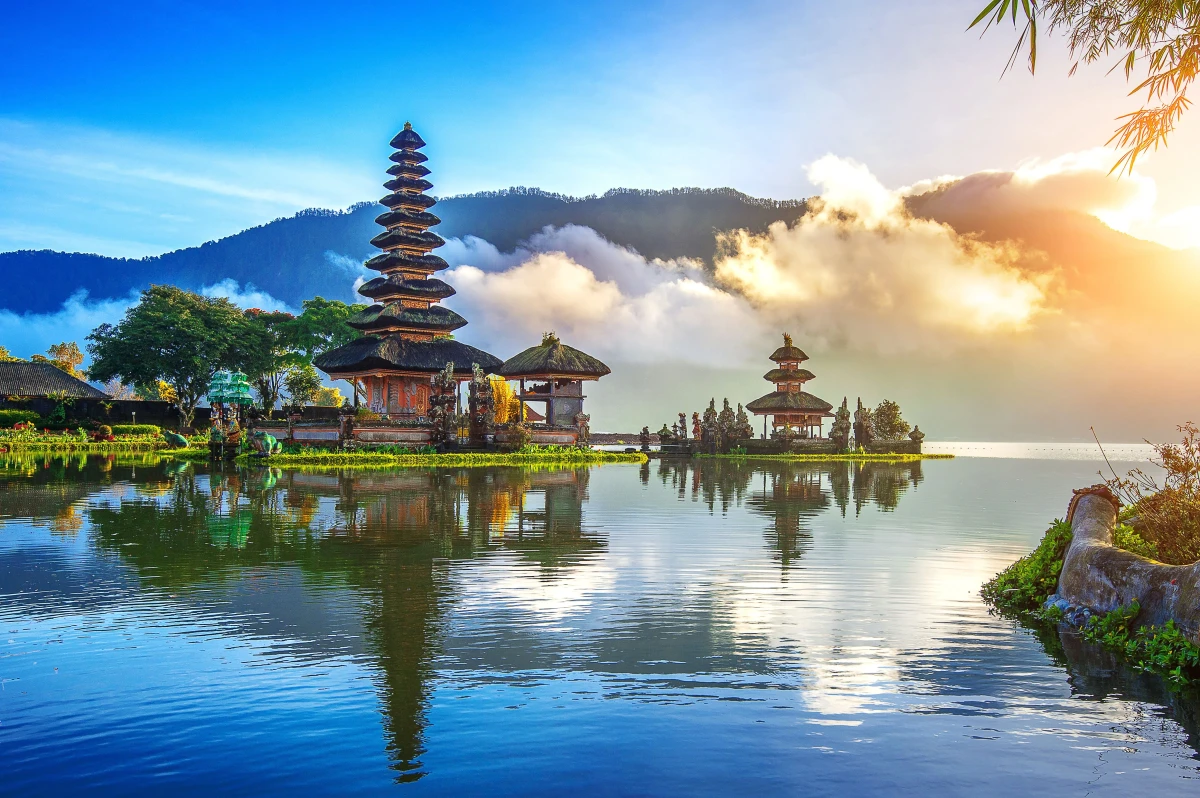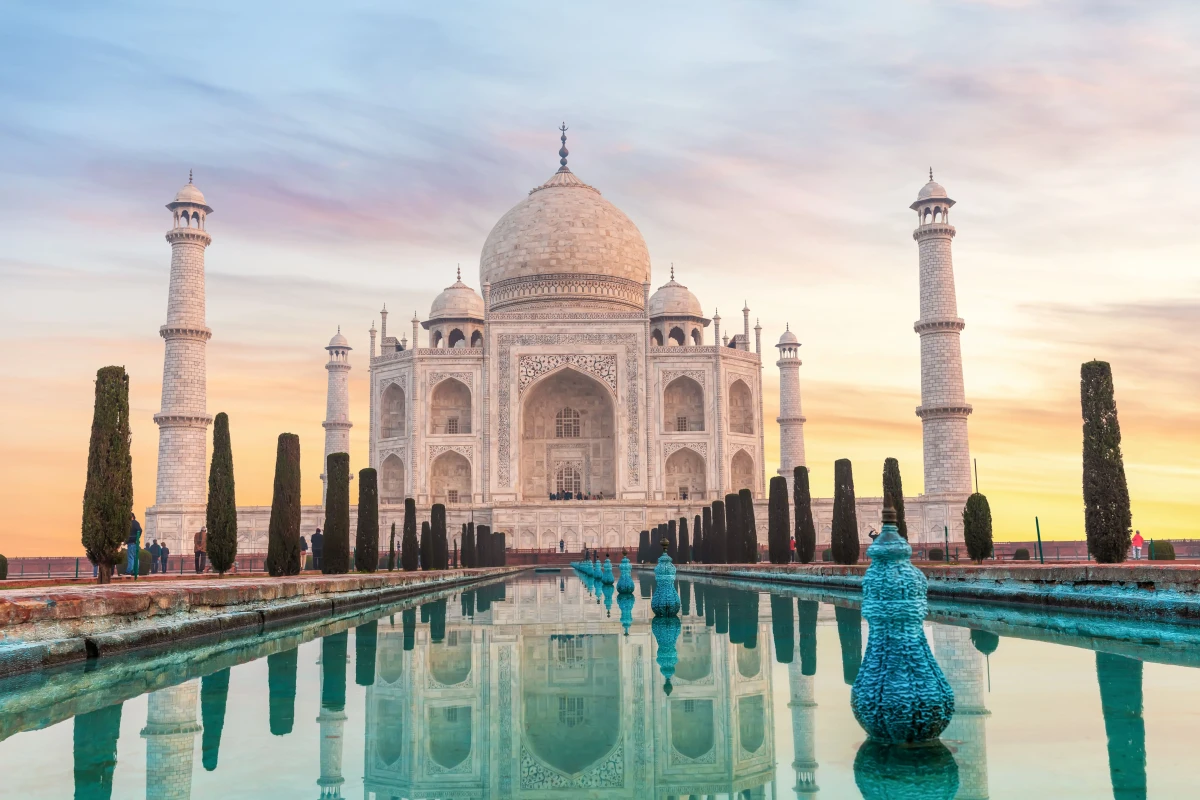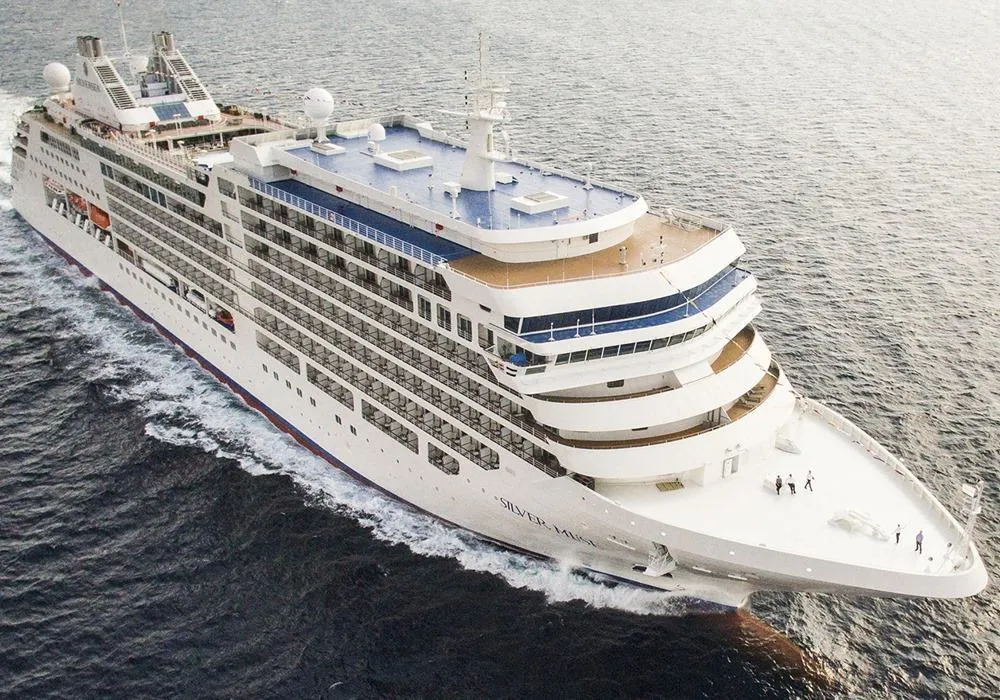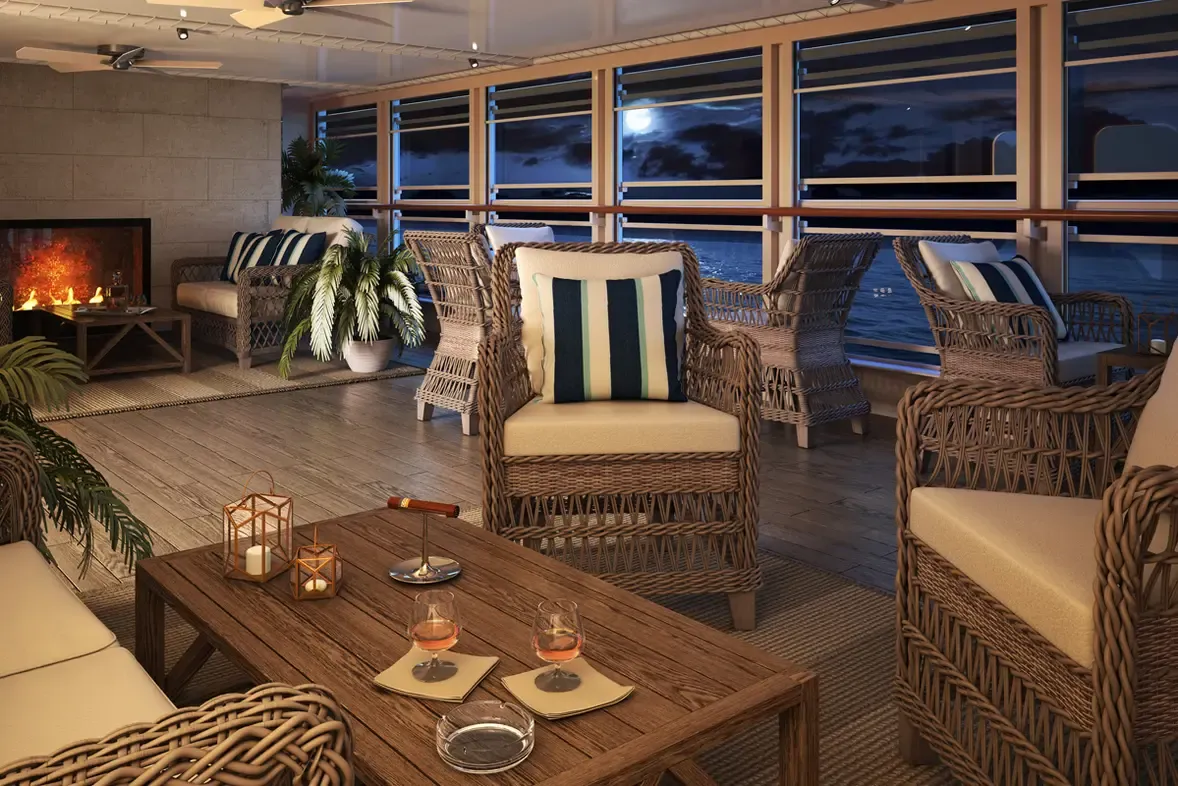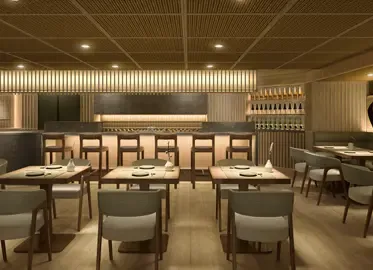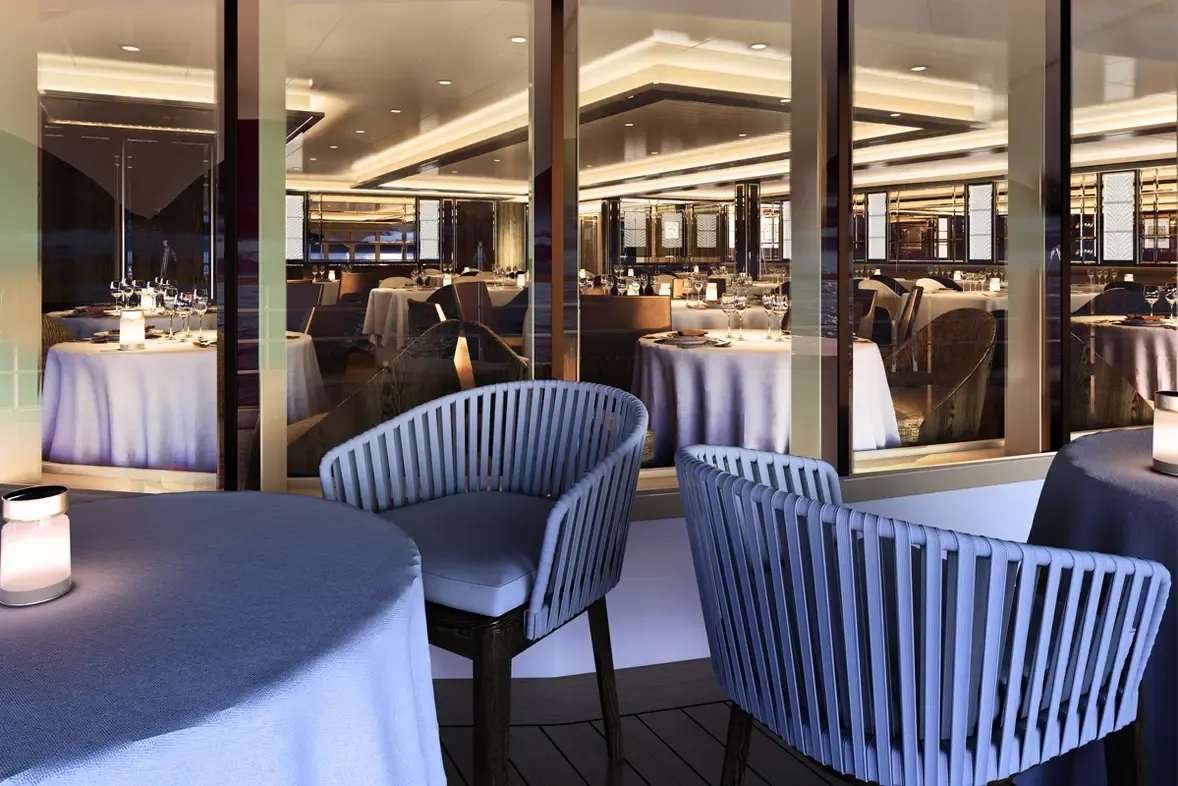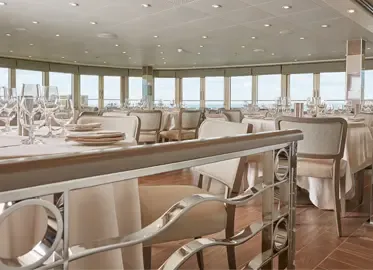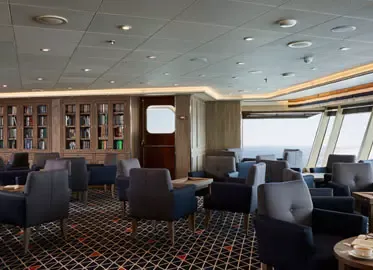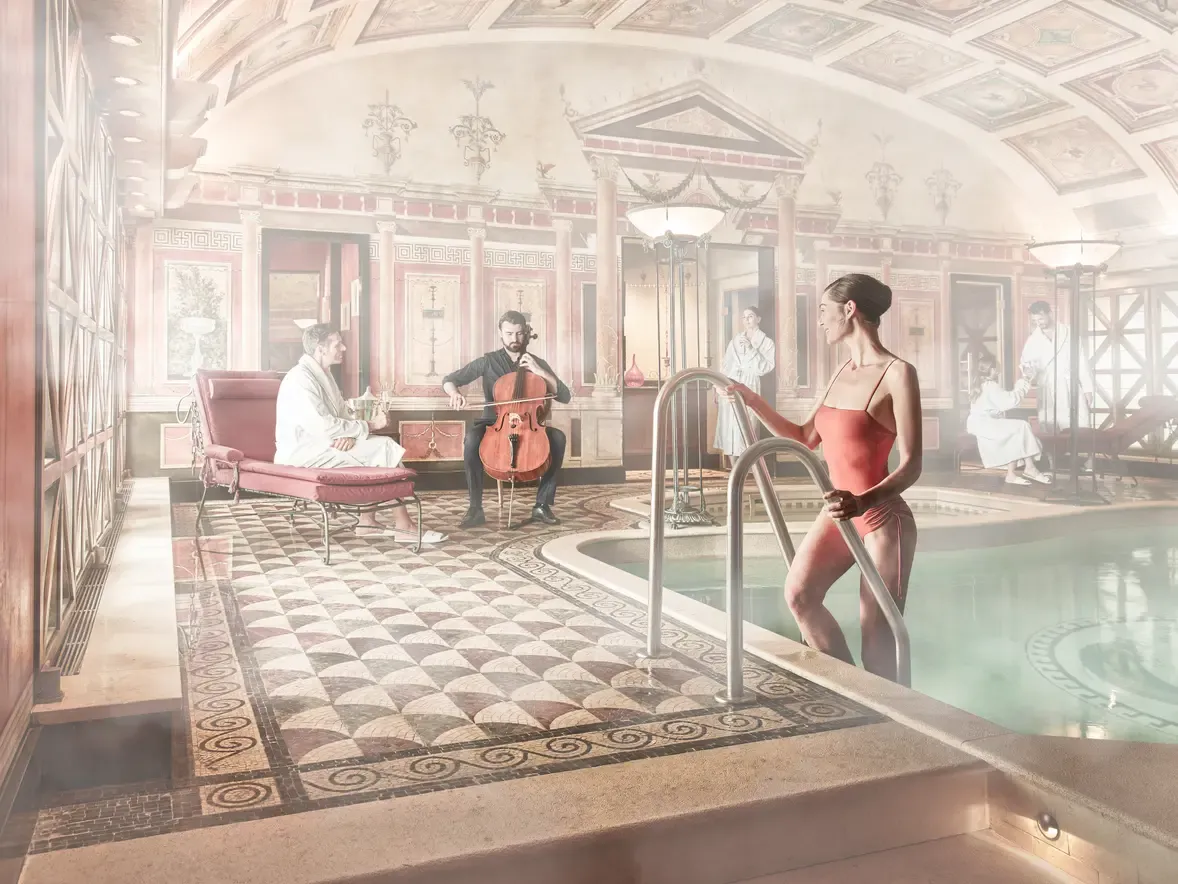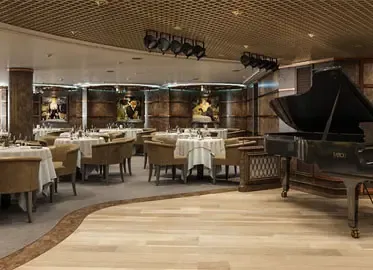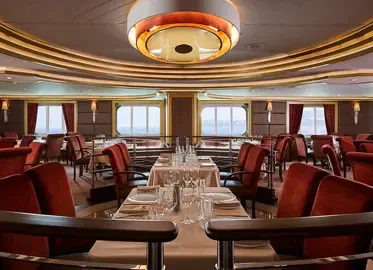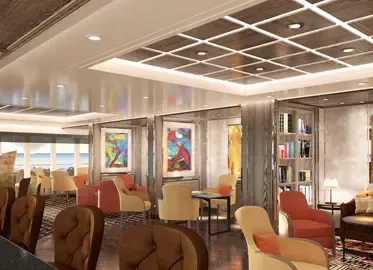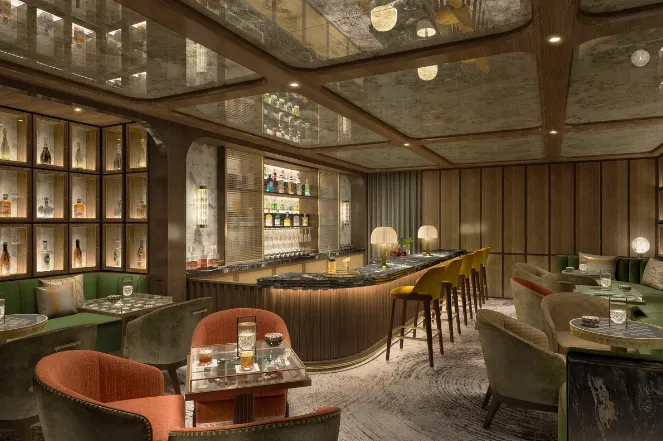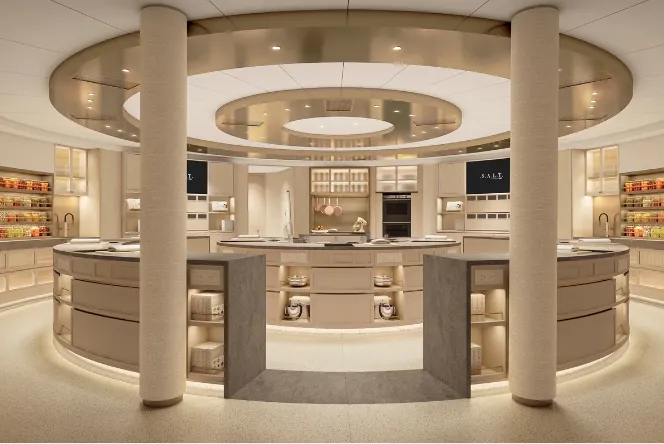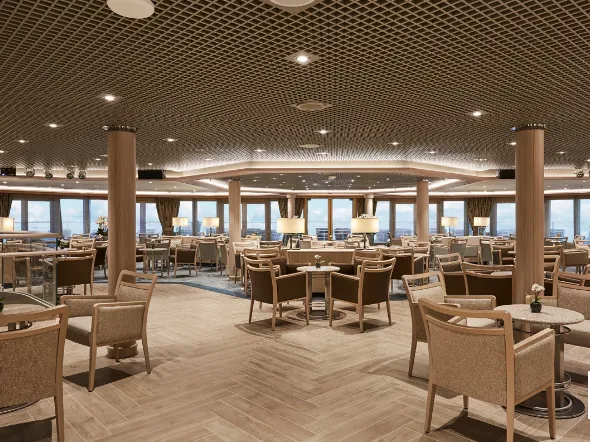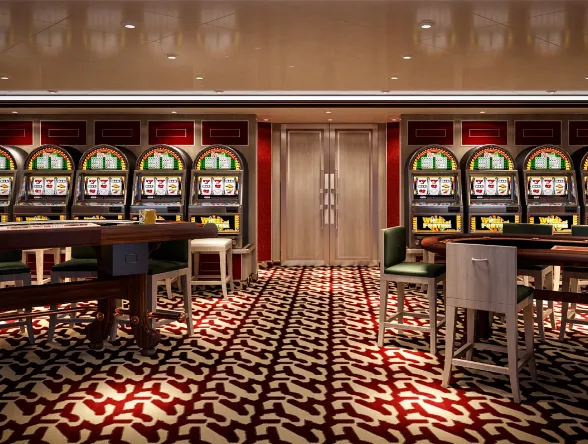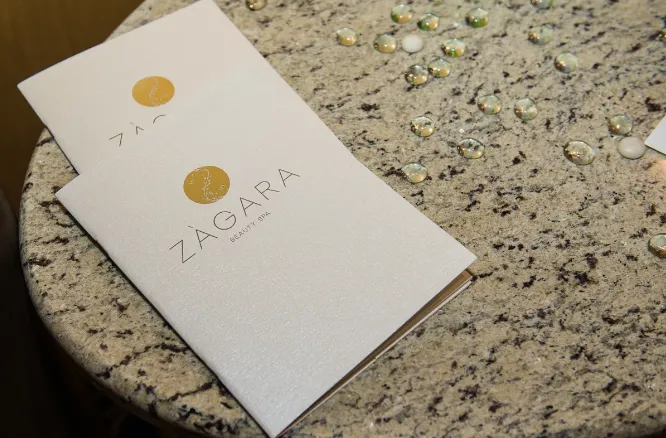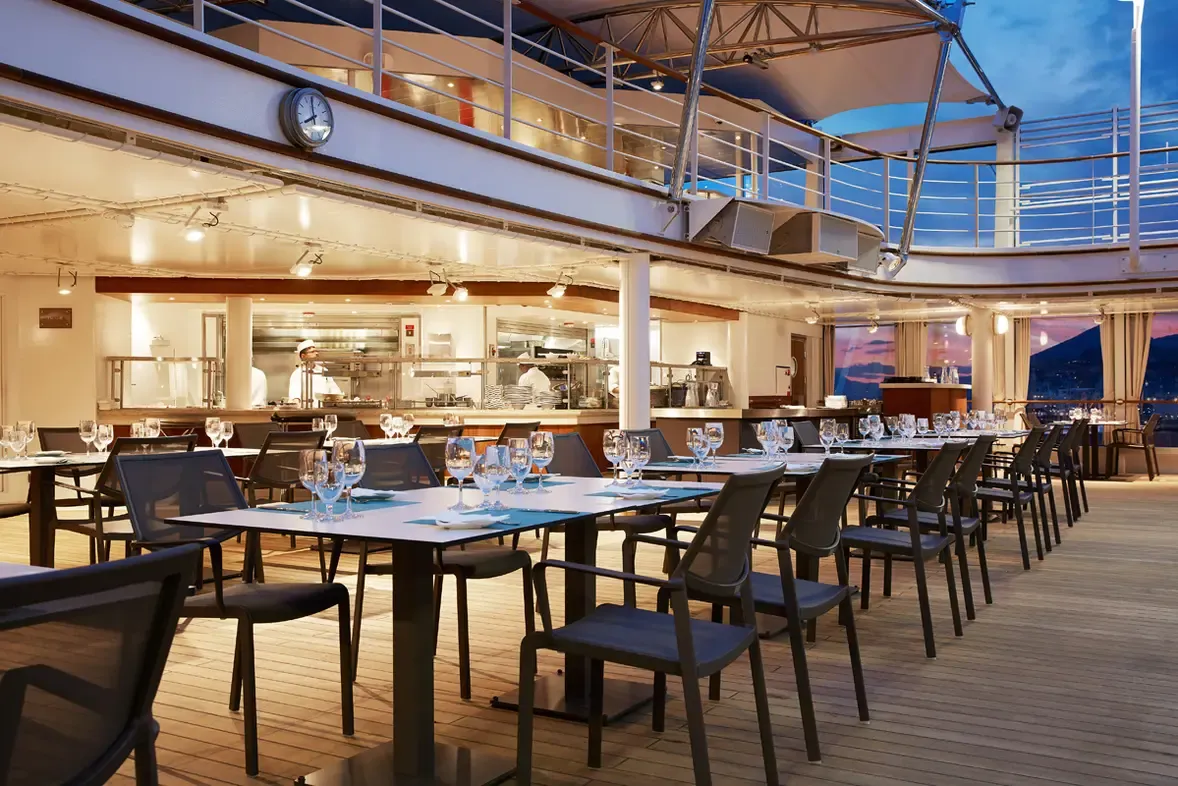Itinerary
Day 1 Brisbane, Australia
The envied climate makes Brisbane a city of outdoor adventure activity and relaxation where days drift by surfing rollers or relaxing in the shade of swaying palms. While Brisbane may play second fiddle to Sydney and Melbourne at times it radiates a creative and contemporary energy offering visitors a refreshing combination of laidback waterfront luxury and urban sophistication. Sandy islands nearby provide scenic diving and oceanside relaxation opportunities while the city's animal santuaries offer opportunities to meet unbearably cute koalas and kangaroos. Brisbane–s impressive skyline of metallic cylinders rises high above the broad Brisbane River below which curves lazily through downtown. The rolling waves of the Pacific are close by but there–s something special about relaxing on soft sand in the very heart of the city on the beautifully executed South Bank Parklands man-made beach. With golden sand and shallow lagoon waters to cool off in it–s a dreamy spot to lie back with a book amid the landscaped gardens. Nestled in a river meander of its own Brisbane Botanic Park glows with colour tropical plants and wading ibis birds and is easily walkable from the Parklands. The South Bank is the cultural hub of city and houses the celebrated Queensland Gallery of Modern Art - a surreal and vibrant jaunt through contemporary Australian art. The city–s award-winning restaurants also serve up elite food matched with generous splashes of wine direct from the nearby Granite Belt–s wine regions.
Day 2 Day at sea
Days at sea are the perfect opportunity to relax unwind and catch up with what you’ve been meaning to do. So whether that is going to the gym, visiting the spa, whale watching, catching up on your reading or simply topping up your tan these blue sea days are the perfect balance to busy days spent exploring shore side.
Day 3 Airlie Beach, Australia
With the finest powder sand, knots of deep green rainforest and ankle-deep shelves of turquoise sea water - Airlie Beach is your gateway to some of the world–s most spectacular beaches. This lively town welcomes wide-eyed young adventurers and the yachting crowd alike to the Whitsunday Islands– serenity, and the hiss of espresso machines, and excited chatter of adventure, spills out from its many cafes and bars. Relax at Airlie Beach Lagoon - the social hub of this town - where sun-heated saltwater invites you to wade, before flaming fresh coral trout over a barbecue as the sun sets. Or, take a seat at one of the glorious restaurants offering uninterrupted views out over the waters of Pioneer Bay, towards the 74 islands that make up the Whitsundays. These heavenly waters don't just attract humans. Humpback and pilot whales also migrate here to indulge in the warm waters and sheltered location. Spot the majestic creatures breaching and gulping in huge gasps of oxygen as you explore. Feeling adventurous? Rainforest walks to secluded pebble beaches await at Conway National Park, where difficulty-graded walking trails are available. Dive among swirls of jewel-coloured marine life, or experience the thrill of skimming into the sky on a seaplane. Take off to admire the scattered island paradises below from a stunning new aerial perspective, before landing and enjoying a picnic amid Whitehaven Beach–s bliss.
Day 4 Cairns, Australia
Warmly welcoming you to the natural wonders of the Great Barrier Reef, Cairns is a treasure trove of rich tropical beauty and incredible sea life. Swathes of rainforest spread out to the north, where you can soar over the canopy in a cable car, before looking down over narrow channels of water plummeting down gorges and crocodile-filled waterways. The diverse lands of the Atherton Tableland lie to the west, but it's the crystal-clear waters - and life-filled reefs - of Cairns' remarkable underwater world that draws universal adulation. Priding itself as the Gateway to the Great Barrier Reef, explore Cairns' constellation of colour, as you dive into the world's largest and most spectacular underwater universe. Cairns is huddled in amongst abundant swathes of rainforests, which give way to glorious crescents of golden beach. Kuranda - with its scenic railway and heritage market stalls - waits to be discovered, cloaked within the depths of the rainforest. Learn of the indigenous people of North Queensland during cultural performances, and hear the throaty reverberations of digeridoos, as you hear eternal stories handed down through time, from generation to generation. Back in Cairns, there's always time for a coffee or a beer, or a feast on fresh oysters with glasses of Cairns' white wines - boldly flavoured with mango and banana notes.
Day 5 Cairns, Australia
Day 6 Day at sea
Days at sea are the perfect opportunity to relax unwind and catch up with what you’ve been meaning to do. So whether that is going to the gym, visiting the spa, whale watching, catching up on your reading or simply topping up your tan these blue sea days are the perfect balance to busy days spent exploring shore side.
Day 7 Day at sea
Days at sea are the perfect opportunity to relax unwind and catch up with what you’ve been meaning to do. So whether that is going to the gym, visiting the spa, whale watching, catching up on your reading or simply topping up your tan these blue sea days are the perfect balance to busy days spent exploring shore side.
Day 8 Day at sea
Days at sea are the perfect opportunity to relax unwind and catch up with what you’ve been meaning to do. So whether that is going to the gym, visiting the spa, whale watching, catching up on your reading or simply topping up your tan these blue sea days are the perfect balance to busy days spent exploring shore side.
Day 9 Darwin, Australia
Australia's capital of the north is a uniquely tropical city, and a historically isolated outpost of this vast, diverse country. Reaching up towards the equator, a full 2,000 miles from Sydney and Melbourne, the city was named in honour of Charles Darwin by the British settlers who established a frontier outpost here. With a unique history, beautiful islands nearby, and a palette of sizzling Pacific flavours, colourful Darwin is an enchanting and exotic Australian destination. Crocodiles patrol the jungled waterways and tropical rainforests around Australia's gateway to the Top End. Explore via airboat to look down on the veiny waterways of the mist-laced Kakadu National Park. The sounds of chattering birdlife and the gentle splash of fountains and waterfalls will fill your ears in George Brown Darwin Botanic Gardens. Soak it all in, before kicking back and relaxing with a picnic and a crackling barbecue. The sunshine and famous tropical pink sunsets mean many visitors naturally gravitate to the city's soft sands to relax at spots like pretty Mindil Beach, as evening approaches. The adjoining market is filled with souvenirs and crafts stands and is the perfect great place to enjoy some fiery Asian flavours. Stroll the stalls, grab some food, and crack open an ice-frosted beer as the sunset show begins. It may be remote, but Darwin found itself on the front line during the Pacific War, as the Japanese air force unloaded their bombs onto the city in 1942. This relaxed unassuming city has a deeply resilient backbone, however, and you can explore the museums to learn more of the war's impact on Darwin, as well as the devastating effects of one of Australia's worst natural disasters, Cyclone Tracy in 1973.
Day 10 Day at sea
Days at sea are the perfect opportunity to relax unwind and catch up with what you’ve been meaning to do. So whether that is going to the gym, visiting the spa, whale watching, catching up on your reading or simply topping up your tan these blue sea days are the perfect balance to busy days spent exploring shore side.
Day 11 Day at sea
Days at sea are the perfect opportunity to relax unwind and catch up with what you’ve been meaning to do. So whether that is going to the gym, visiting the spa, whale watching, catching up on your reading or simply topping up your tan these blue sea days are the perfect balance to busy days spent exploring shore side.
Day 12 Benoa, Bali, Indonesia
Bali. A.k.a. Island of the Gods, Land of a thousand temples or the World–s last paradise. As superlative as these monikers may sound, they do not do justice to the actual reality of the island. Bali is as good as everyone says – verdant mountains with terraced rice fields in one direction, black sand beaches in another and captivating people that will leave even the most seasoned traveller humbled. If you–re looking for a Garden of Eden that really does have it everything, Bali ticks all the boxes. The rich and diverse culture of the island is what sets Bali apart from Indonesia–s (many) other tropical paradises. The country–s estimated 10,000 Buddhist-Hindu temples, with their daily offerings of lotus flowers and fruit are testament to the gentleness of the islander–s belief. Then there is the vibrant arts and crafts scene, notably in Ubud in the centre of the island, but prolific everywhere. Ideal souvenirs to bring back range from gorgeous silver jewellery to intricate wood carvings. Additionally, do try to see a traditional dance if possible, particularly if accompanied to local gamelan music. No one could mention Bali without mentioning the food. Dishes range from elaborate meals to street food bites, but all are without exception ambrosia. Do not miss out on tasting a succulent chicken satay, betutu (apparently the King–s favourite meal) and sambal matah. But whatever you decide to discover, you can be assured of a taste sensation that will remain with you long after you have returned home.
Day 13 Benoa, Bali, Indonesia
Day 14 Lembar, Lombok, Indonesia
An island of startling contradictions and contrasts, Lombok exudes an aura of the staid and the rural, a genteel way of life in a quiet backwater. Located to the east and across a deep strait from its illustrious neighbor Bali, the island of Lombok offers unique culture, beautiful landscapes and a far less frenetic, pressured atmosphere than Bali. However, savvy travelers agree that Lombok–s calm existence may soon come to an end, as it is fast becoming the new "in place" after Bali. The island was once ruled by a series of Sasak princes who spent their time fending off successive invasions from Sumbawanese and Makassarese attackers. In 1740, the Balinese established a stronghold here and imposed their culture on the Sasaks. Later, Lombok came under Dutch rule until the country achieved independence. The western part of the almost circular island is well irrigated by mountain streams and artesian springs. Here Balinese and Sasaks have sculpted handsome rice terraces; Hindu temples vie for attention with glistening white mosques rising from picturesque rural villages. More dramatic is the southern coast with beautiful sandy bays set between rocky outcrops. Most of Lombok–s attractions are concentrated in the western district of the island, within a nine-mile radius of the capital, Mataram. Members of Lombok's polyglot population - Sasak, Balinese, Chinese and Arab - continue their laid-back, traditional ways.
Day 15 Day at sea
Days at sea are the perfect opportunity to relax unwind and catch up with what you’ve been meaning to do. So whether that is going to the gym, visiting the spa, whale watching, catching up on your reading or simply topping up your tan these blue sea days are the perfect balance to busy days spent exploring shore side.
Day 16 Semarang (Gateway for Borobodur), Indonesia
See a wonder of the world rising from Central Java - as you encounter the majestic Borobudur Temple, the largest Buddhist monument in existence. Hidden from the world for hundreds of years, below the ash of a vast volcanic eruption, it stands in all of its restored glory, with Mount Merapi looming imposingly behind. Semarang itself mainly functions as a gateway for Borobodur, but its port was a vital one for the Dutch colonisers, and the city continues to be a bustling centre of Java life. Hang around to discover Semarang's collection of colonial churches, and the towering Avalokitesvara Pagoda, which reaches up seven tiers into the city's skies. A soaring UNESCO World Heritage Site, the sprawling Borobudur Temple covers 123 square metres of land and was completed in the 9th century. Learn of its mysteries and secrets, and of the abandonment and eruption, which would conceal it from view for hundreds of years. Built by the Syailendra dynasty – which ruled in Java for 500 years - the lotus flower-shaped temple was restored to its former glory in the 1970s and features three layers, stacked up with intricate carvings. The monuments represent key Buddhist beliefs relating to the process of attaining Nirvana. Indonesia–s largest Hindu temple also rises nearby, in the form of Prambanan Temple. Another lost UNESCO World Heritage Site, its soaring stone spires date back to the 9th century.
Day 17 Day at sea
Days at sea are the perfect opportunity to relax unwind and catch up with what you’ve been meaning to do. So whether that is going to the gym, visiting the spa, whale watching, catching up on your reading or simply topping up your tan these blue sea days are the perfect balance to busy days spent exploring shore side.
Day 18 Singapore
Advanced, airy and elevated, Singapore is a spectacular, futuristic vision of utopian city life. A healthy population of almost six million call it home, but this is a city designed with space to breathe, and gorgeous outdoor parks, massive indoor greenhouses and beautiful recreational spaces spread between the City of Gardens' skyscrapers and soaring structures. Once a quiet fishing village, now a glistening island city-state and an international beacon of science, education and technology. Singapore is almost intimidatingly clean - and the hyper-efficient public transport system whips residents and visitors across the city's neighbourhoods in a heartbeat. Glorious fountains and audacious skyscrapers loom up - nodding to traditional feng shui beliefs - and putting on dazzling illuminated displays after dark. The lush green botanical gardens are a spectacular UNESCO World Heritage Site, covering 52 hectares and decorated with impressive colourful orchids. Or breathe in more of the freshest air by heading up to wander the canopy strung bridges of MacRitchie Reservoir Park. Head for the iconic Marina Bay - a landmark of the city crowned by three interconnected towers, which watch out over island sprinkled waters. Jaunt between Little India and the atmospheric Chinatown in minutes, where beautiful temples - like the Chinese Thian Hock Keng Temple and Hindu Sri Mariamman Temple add rich cultural intrigue. Singapore's cuisine is a mouthwatering fusion of its Indian, Chinese, Indonesian, and Malay influences, taking and enhancing the best of each. Enjoy dishes in towering restaurants, or toast the glowing skyline with the city's eponymous gin-soaked cocktail - a Singapore Sling.
Day 19 Singapore - Disembark - Fly to Delhi
Your private transfer will take you to the Changi Airport after disembarkation.
Fly from Singapore to Delhi, India.
Arrive at New Delhi's International Airport. Following customs, immigration formalities and baggage collection, Travel Representative will meet you as you exit the arrival terminal building after which you will be transferred to your hotel.
Overnight in Delhi - 5-star Leela Ambience Convention Hotel or similar (Meals: D)
Day 20 Delhi, India
Breakfast is at the hotel. Later proceed for full day sightseeing of Old and New Delhi.
Introduction of Delhi starts with Old Delhi (Shahjahanabad): visiting Red Fort (Photo Stop), Jama Mosque, Chandni Chowk on a Rickshaw Ride, Spice Market and Raj Ghat. In the 17th century, the Mughal emperor, Shah Jahan, made his capital in Shahjahanabad, the area that broadly covers present-day Old Delhi, also called the walled city.
Jama Mosque is the largest and most well-known mosque in India. It is flanked by Red fort on one side and old city Chandni Chowk on another side. Built by Shah Jahan in 17th century, Jama Masjid is one of the most crowded destinations in Delhi for pilgrims and tourists. It is a great place of Muslim pilgrimage. There are three entrances to the Courtyard- on the East, North and South. Since the mosque is laid on a hillock, the steps climbing up to this are steep. The eastern gate has 774 steps. Note: It is not recommended to visit Jama Mosque on Fridays due to immense crowd during the prayers. Hence we will change the timing of the sightseeing during the day.
Chandni Chowk is the oldest market places of Old Delhi. The origin of Chandni Chowk dates back to the Mughal era in Indian history. According to legends, Chandni Chowk market was established during the reign of the Mughal Emperor Shah Jahan and was designed by Jahanara-Emperor Shah Jahan's favorite daughter. Today this market is considered to be one of the busiest markets in the world.
Raj Ghat lies on the banks of the river Yamuna. It is the last resting place of Mahatma Gandhi, Father of the Nation. It also houses two museums dedicated to Gandhi. At the Gandhi Memorial Museum, you can catch a documentary on the life of this noble soul and the philosophy of the Sarvodaya Movement.
Later, you will visit to Gurudwara Bangla Sahib, Lutyen's Delhi, Humayun's Tomb and Qutub Minar.
The British Empire established their capital in New Delhi with much fanfare in 1911. King Edward of Britain came to Delhi and designated the leading British Architect, Edward Lutyen's, with the task of building the new capital in Delhi. Lutyen's Delhi primarily consists of the administrative area of the capital, India Gate and the Viceroy's House (which is now known as Rashtrapati Bhawan). A visit to Delhi is incomplete without going to Lutyen's Delhi which one can say, is the place where the Central Government of India currently resides and works from.
Gurudwara Bangla Sahib is located near the main Connaught Place. It has developed into a centre of pilgrimage for thousands of people every day. People from various religions, castes and places visit this holy place. A bungalow in Delhi owned by Raja Jai Singh of Amber (Jaipur) is now the Gurudwara Bangla Sahib. The 8th Guru Sri Har Kishan Ji had been here as a guest of Raja Jai Singh. He left for his heavenly abode on October 6, 1661 AD.
Humayun's Tomb, a UNESCO World Heritage Site, is the first substantial example of Mughal architecture in India. This magnificent garden tomb was built in 1565, nine years after the death of Humayun, the second Mughal Emperor, by his widow Bega Begam. Inside the walled enclosure are garden squares with walkways, water channels and a mausoleum with a double dome in the center. Humayun's Tomb is often considered a precursor to the Taj Mahal owing to the stylistic similarity of its structures.
Qutab Minar with a height of 234 feet is considered as the tallest individual tower in the world. It is one of the many masterpieces that depicted the sheer brilliance of the Mughal architects of those times. It was constructed under the rule of Sultan Qutub-ud-din Aibak in 1199. It is surrounded by other ancient monuments which are collectively called Qutub complex.
Stay overnight in Delhi - 5-star Leela Ambience Convention Hotel or similar (Meals: B)
Day 21 Delhi to Agra (220 Kms/ 4 Hrs)
Breakfast is at the hotel.
Participate in cooking demonstration followed by lunch.
Learn the intricacies of the preparation of Indian food & some of India's best-known dishes by taking part in an engaging and hands on cooking class. Relish the delicacies cooked by you after.
Later, travel by surface to Agra. Famed with one of the Seven Wonders of the World - Taj Mahal, historical monuments, architectural grandeur ventures and the beauty of marbles, Agra thrives as one of the tourist destinations in India. The city is known for its superb inlay work on marble by craftsmen supposedly with a lineage dating back to the Mughals. Agra's handicrafts also include carpets, gold thread embroidery and leather shoes.
Upon arrival in Agra, transfer to hotel.
Evening is at leisure.
Stay overnight in Agra - 5-star Taj Hotel & Convention Agra or similar (Meals: B, L)
Day 22 Agra - Taj Mahal
Early morning at sunrise, visit Taj Mahal.
Taj Mahal is one of the Seven Wonders of the World that symbolizes the love of the Mughal Emperor Shah Jahan for his beloved wife Mumtaz Mahal's final resting place.
Taj Mahal is widely recognized as "the jewel of Muslim art and one of the universally admired masterpieces of the world's heritage. It was completed in 1653 AD. It is believed that it took nearly 22 years to complete the grandeur palace. There are 22 small domes over the Taj Mahal, denoting the same. To experience the beauty of this architectural marvel, it needs to be viewed at different times of the day and year. The white marble building changes its hue with the variations in the daylight.
Return to the hotel for breakfast.
Visit to Agra Fort.
The Agra Fort is one of the most important and robustly built strongholds of the Mughals, embellished with number of richly decorated buildings encompassing the imposing Mughal style of art and architecture. The fort contains a maze of buildings forming a small city within a city. The fort offers great views of the Taj Mahal from across the Yamuna.
Later visit to a Marble Inlay Workshop and Store.
Agra is renowned for its exquisite marble inlay work, particularly in the context of the Taj Mahal. The tour will begin with an introduction to the history and art of marble inlay. You may learn about the origins of this craft and its significance in the cultural heritage of Agra. Skilled artisans will showcase their techniques for creating delicate designs by embedding semi-precious stones into marble. You might get to learn about the different types of semi-precious stones used in marble inlay, their properties, and the significance of each in the overall design.
Evening is at leisure.
Stay overnight in Agra - 5-star Taj Hotel & Convention Agra or similar (Meals: B)
Day 23 Agra - Ranthambore (320 Kms / 5.5 Hrs)
Breakfast is at the hotel.
Later, travel by surface to Ranthambore.
Near the town of Sawai Madhopur in Rajasthan, Ranthambhore National Park is an outstanding example of Project Tiger's efforts at conservation in the country. The forests around the Ranthambore Fort were once, the private grounds of the Maharajas of Jaipur. As a result of the stringent efforts in conservation, tigers, the prime assets of the Park, have become more and more active during the day.
Upon arrival in Ranthambore, transfer to hotel.
Rest of the day is at leisure.
Stay overnight in Ranthambore - 5-star AamaGathi Wildlife Resort or similar (Meals: B, L, D)
Day 24 Ranthambore
Early morning and Afternoon, enjoy jungle safari by a shared 4x4 jeep.
More than in any other park or sanctuary in India, tigers are easily spotted here in daylight. It is very easy to chance upon a tiger lolling around lazily in the sun, or feverishly hunting down Sambhar around the lakes. Apart from tigers, you will come across a few panthers too. The other permanent residents of the park include marsh crocodiles, hyenas, jungle cats & sloth bears. Sambhar are found in abundance all over the area, the prime target of all predators. Chital, Nilgai & chinkara are the other inhabitants here.
Return to the hotel for the breakfast and enjoy rest of the day at leisure.
Stay overnight in Ranthambore - 5-star AamaGathi Wildlife Resort or similar (Meals: B, L, D)
Day 25 Ranthambore to Jaipur (180 Kms / 3 Hrs)
Breakfast is at the hotel.
Later, travel by surface to Jaipur.
Adorned with pink sandstone palaces, majestic forts and verdant green gardens against a scenic backdrop of the Aravalli hills, Jaipur represents the charm of India's rich past and the sophistication of a flourishing metropolis. Maharaja Sawai Jai Singh II founded the city in 1727, when he decided to shift his capital from Amer. A renowned architect, astronomer, and avid scientist, Maharaja Sawai Jai Singh II built his capital with geometric precision and made Jaipur one of the most well-planned cities in India.
Upon arrival in Jaipur, transfer to hotel.
Rest of the day is at leisure.
Stay overnight in Jaipur - 5-star Oberoi Raj Vilas or similar (Meals: B)
Day 26 Jaipur, India
Breakfast is at the hotel.
Later, visit the ancient capital of Amber to see the fabulous Amber Fort.
Amber Fort is located in Amer, 11 Km from Jaipur. The fort boasts of an artistic grandeur and structural expertise. It is a reminiscent of the bravery and courage of the mighty Rajputs, who had played a remarkable role in the history of medieval India. Man Singh – I has started the construction of this fort in 1592 and, perhaps, it was the defense that topped his priorities before constructing this fort. The Kesar Kyari Complex of Maota Lake enhances the entire experience. Note: Amber Fort remains closed on public holidays and on the day of Holi celebration.
Take a photo stop near Jal Mahal. Jal Mahal, also known as 'Water Palace' is a palace in the middle of the Man Sagar Lake in Jaipur city, the capital of the state of Rajasthan, India. The palace and the lake around it were renovated and enlarged in the 18th century by Maharaja Jai Singh II of Amber.
Later proceed for sightseeing tour of Jaipur visiting City Palace and Hawa Mahal.
City Palace is the former residence of the Royal Family of Jaipur. It is located in the heart of the walled city. The huge complex of courtyards, gardens, and buildings blend both Rajasthani and Mughal architecture. The palace also has a museum of Maharaja Sawai Man Singh II where on display are a wide array of royal costumes, some very exquisite and precious Pashmina (Kashmiri) shawls, Banarasi Silk sarees, Sanganeri prints and folk embroidery. Note: City Palace and Observatory remains closed on public holidays and on the day of Holi celebration.
Later, drive past magnificent Hawa Mahal and walk through the old bazaar (market) of Jaipur, popularly known as Bapu Bazar.
Palace of Winds, popularly known as Hawa Mahal is perhaps the most well-known architectural landmark of Jaipur. An imposing structure in the city's signature pink color, Hawa Mahal is a unique palace as it does not have any rooms or halls. It is a five-storeyed structure embellished with numerous little windows and balconied. The Palace was designed as a viewing gallery for the women of the royal household, the windows and balconies of this palace feature delicate latticework that is astonishing in detail and level of craftsmanship.
Stay overnight in Jaipur - 5-star Oberoi Raj Vilas or similar (Meals: B)
Day 27 Jaipur to Delhi (260 Kms/ 5 Hrs)
Breakfast is at the hotel.
Later, travel by surface to Delhi.
Upon arrival in Delhi, transfer to the hotel in Delhi Aerocity.
Rest of the day is at leisure.
Stay overnight in hotel - 5-star Roseate House Aerocity or similar (Meals: B)
Day 28 Delhi - Australia
After breakfast, transfer to New Delhi International Airport to board flight for departure flight home. (Meals: B)
